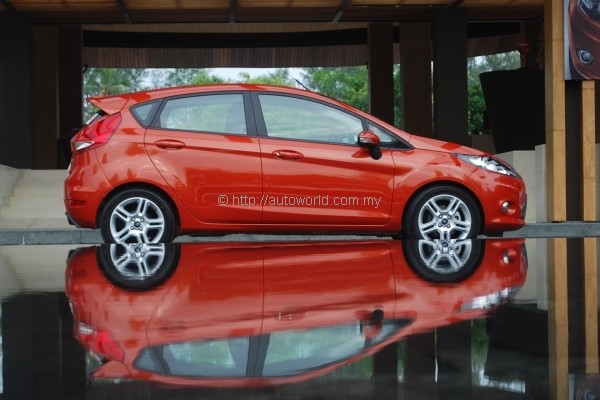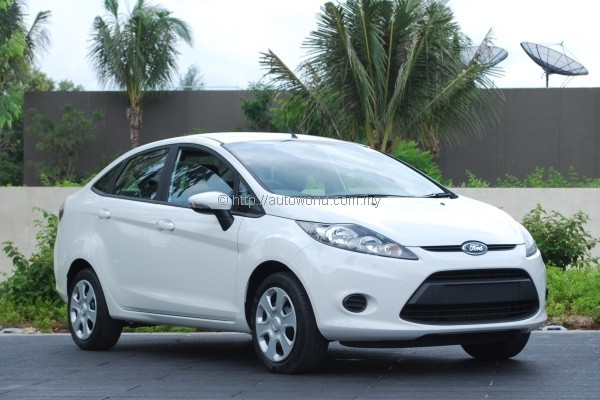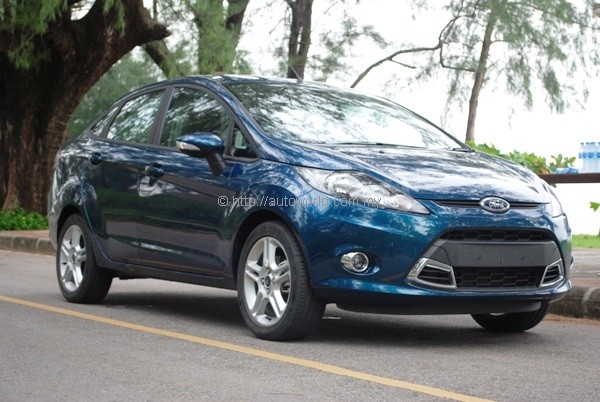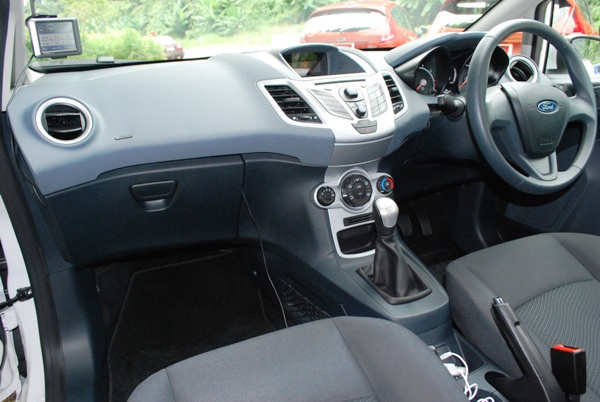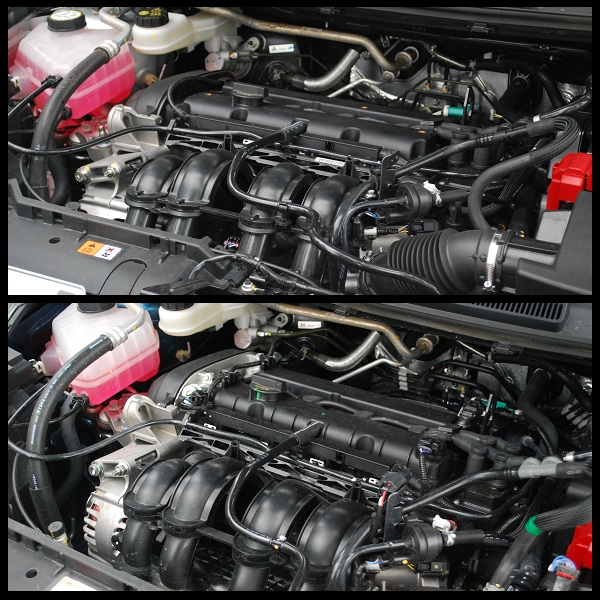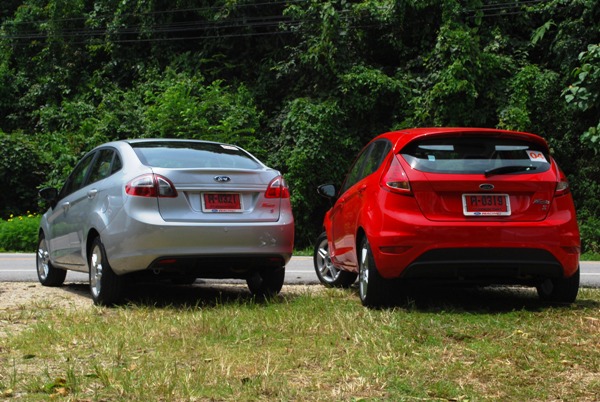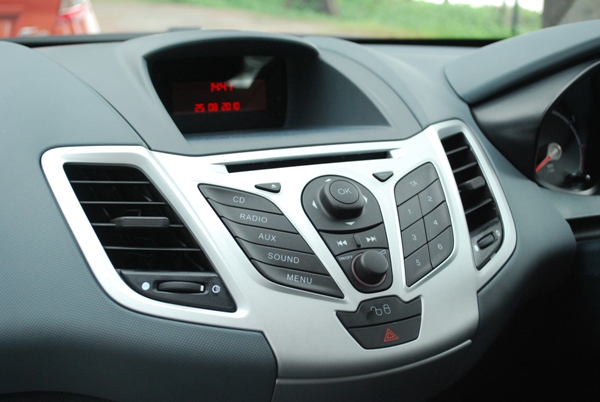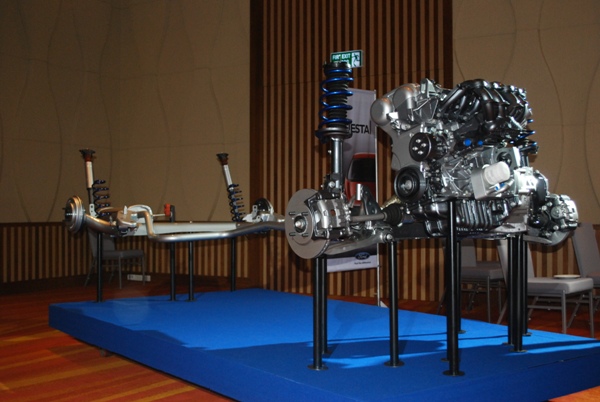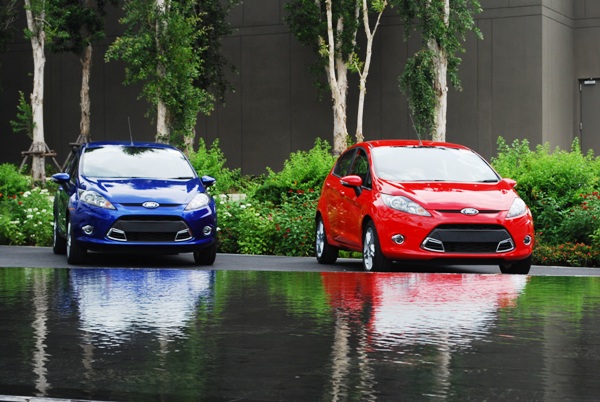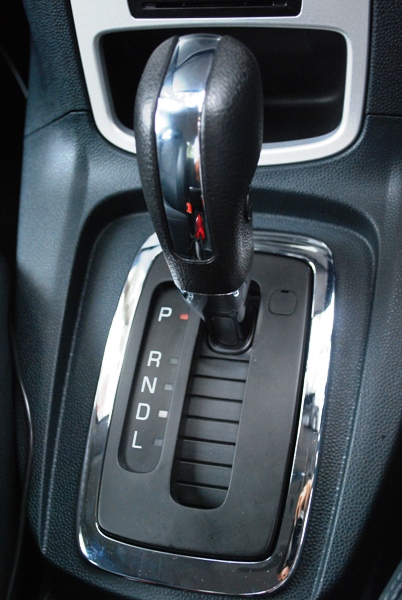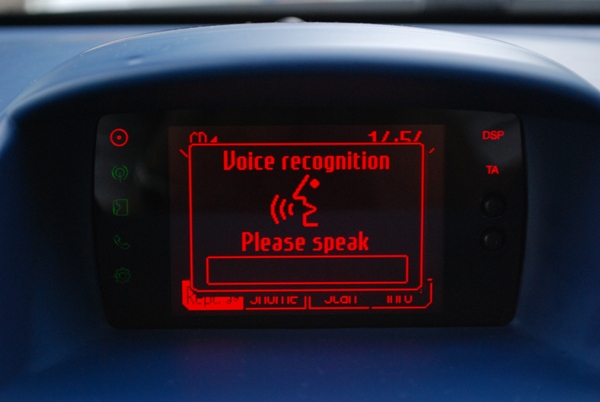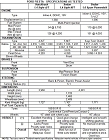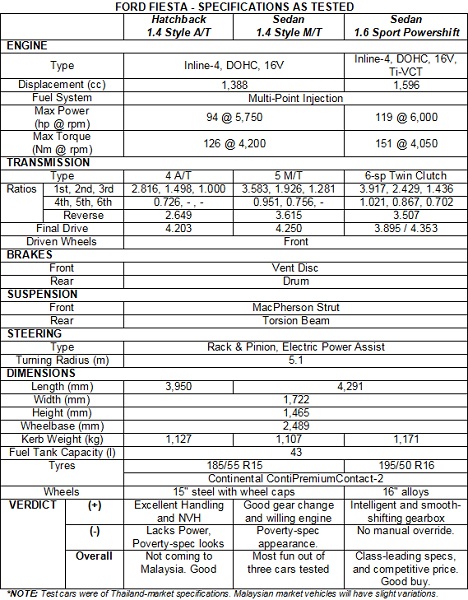Ford Fiesta – Good things come in small packages
Ever since Sime Darby Auto Connexion (SDAC) took full control of the Ford franchise in Malaysia, the company has been diligently launching model after model in our market. For some reason however, only the Ford Ranger is selling in any significant numbers.
Sales of the Focus has been quietly picking up, but that’s because it is now the only model with a diesel engine and twin-clutch transmission. The problem for SDAC is that there is still widespread doubt on the Ford brand, with concerns still focused on its resale value, plus availability and affordability of spare parts.
While the Ranger continues to carry the brand with decent sales, SDAC knows that for them to be able to sustain the Ford brand here in the long term, it will need to move out of its comfort zone as a niche player and take on the big guns. To successfully do that, however, Ford needs a game-changing car for it to breakthrough into the Japanese stranglehold. Say hello to the Ford Fiesta, coming soon to Ford showrooms near you.
Production
When we talk about the Fiesta, it is inevitable that comparisons will be immediately drawn with the Mazda2. Besides sharing an identical platform, the Fiesta also rolls out from the same Auto Alliance Thailand (AAT) plant in Rayong as the Mazda2. However, the similarities between the two end there, as both cars operate significantly different running gear and have substantially different characters.
Production of the Fiesta commenced in the AAT plant earlier this year, though some neighbouring markets such as Singapore and Australia have already started selling this model much earlier. These markets sourced their cars from Europe, but the AAT plant is set to cater for them as well soon.
The delayed rolling-out of the Fiesta from AAT has actually worked to the advantage of consumers in this region, as Ford was able to immediately incorporate some running changes into the car from the start. As a result, the Thai-made Fiestas have a more advanced ESP software compared to Euro models. Key enhancements made to the Thai Fiestas also include improved noise insulation, but it is unknown if the said improvements will be at all perceivable.
Variants on Offer
In our region, the Fiesta is offered with a choice of two body shells, three engines, and three transmissions. We will leave it to you to compute the number of possible permutations, but to start with, you’ll get the option of a 5-door hatchback and a 4-door sedan.
In terms of engines, only four-cylinder motors are available, and offerings start with a basic 1.4-litre petrol engine paired with either a 5-speed manual or traditional 4-speed torque converter automatic transmission. Folks with the appetite for more power can opt for the 1.6-litre engine offered with either a 5-speed manual or 6-speed PowerShift twin-clutch transmission.
The remaining powertrain option is a 89hp/200Nm diesel motor mated with only a 5-speed manual transmission to date. An automatic model is currently being developed, and SDAC will consider bringing in the Fiesta diesel when the auto gearbox option is available.
For now, however, the Malaysian market will have to make do with three variants – 1.4 M/T hatchback, 1.6 Powershift sedan, and 1.6 Powershift hatchback. According to early price lists given to us by SDAC, the three variants go for RM73,888, RM79,888, and RM84,888 respectively on-the-road inclusive of insurance in Peninsula Malaysia.
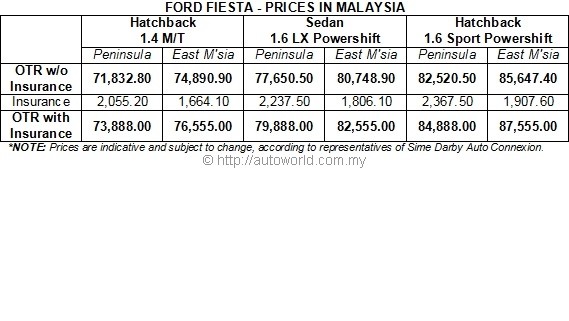 |
Specifications & Equipment
The entry level Duratec engine powering the Fiesta 1.4 displaces 1,388cc and has twin camshafts operating its 16 valves. Made with all-aluminium construction, the Fiesta 1.4 outputs 94hp @ 5,650rpm and 128Nm @ 4,050Nm.
Omission of fog lamps and alloy wheels will suggest poverty-spec, but closer inspection shows more than decent levels of equipment – all-round power windows, power-adjusting wing mirrors, multi-function display, MP3 audio with aux jack, driver airbag, ABS, EBD, ISOFIX mounts, and reverse sensors.
Moving up, we then have the two 1.6-litre variants running on a newer 16-valve twin-cam motor with Twin independent Variable Camshaft Timing (Ti-VCT). From a displacement of 1,596cc, the engine extracts a decent 118hp @ 6,000rpm and 152Nm @ 4,050rpm.
For Malaysia, the standard transmission on offer for the Fiesta 1.6 is the 6-speed PowerShift twin-clutch transmission, which, despite the identical nomenclature, is not the same as the one found in the Focus TDCi. The Fiesta’s gearbox is more compact, and has a lower torque capacity – engineered to handle up to only 250Nm to date, well below what’s produced by the diesel Focus.
Despite the shared powertrain, however, the sedan and hatchback variants of the Fiesta 1.6 have significant differences in equipment, with the latter receiving significantly more goodies. Sedan buyers save RM5,000 compared to the hatch, but will have to live without front fog lamps, sports suspension, 16″ alloys, a host of interior amenities, and an airbag for the passenger. The passenger airbag omission for the 1.6 sedan did not go down well the press pack, and Ford has indicated that they might look into rectifying this for later batches.
While the Fiesta 1.6 hatch gets a sports suspension, which means stiffer spring and damper rates, the overall architecture is standard across the board. You get MacPherson struts up front and a torsion beam behind, which Ford calls a twist beam. Brakes are standard across the board as well, with vented discs up front and drums behind. Even globally, Ford does not offer the option of rear disc brakes for the Fiesta in any variant.
Standard on both 1.6-litre variants are Electronic Stability Programme (ESP) and Traction Control (TCS). Also bundled into this package is a Hill Launch Assist which holds the car for three seconds after the brake pedal is released on a slope to prevent roll-back. The irony is that this feature would actually be most useful on manual versions, which do not get it.
One particularly nifty feature to be offered in the Fiesta 1.6 hatchback will be the voice command function, which operates the audio and bluetooth installations. It’s not particularly useful, but it’s guaranteed to impress your mates. Do familiarize yourself with its limited vocabulary though, this is not KITT nor the Starship Enterprise, for that matter.
Media Drive in Phuket
A regional media test drive of the Fiesta was held in Phuket recently, and Autoworld was among the Malaysian contingent that flew in last week. Journalists of various nationalities were organized into groups, and tested the Fiesta in different days.
SDAC secured seats for some 19 Malaysian journalists, and that saw an entire day devoted just for us. We were the sixth group to drive the cars over a 250km journey which took us through places such as Thung Kha, Haadson Resort, Khao Lak, and Lampee Waterfall.
Thanks to earlier groups of journalists, the test cars generally had clocked over 2,000km of mileage by the time we took the wheel. There was a mix of 1.4 and 1.6-litre petrol test cars, and all journalists swapped cars at the mid-point of the journey. However, it should be noted that our test cars were of Thai market specifications, and there will be some deviations from the Malaysian-spec Fiestas.
1.4 Style A/T Hatchback
I started my day in the base-spec 1.4-litre hatchback. Although the Fiesta will launch in Malaysia with the 1.4 available only in manual transmission, Ford weirdly supplied all but one of the 1.4-litre test cars with automatic transmission.
At the drive, I heard chats that there are considerations for the 1.4 to eventually reach our soils with this 4-speed auto, but if such plans are afoot, I would suggest that Ford scrap them immediately. Perhaps the hurried pace of a media test drive put it at a natural disadvantage, but nothing less than full throttle application would do in my attempts to keep up with our colleagues from other publications.
Good thing then, that Ford provided the auto gearbox with a manual override facility, as the engine and transmission needed some serious work to get going. It should be noted, however, that this shortcoming allowed a few other notable plus points of the Fiesta to shine through.
First of them is the impressive NVH insulation. Even with my right foot buried firmly into the throttle and the engine constantly spinning north of 4,000rpm, conversations in the cabin could still be carried out without raising our voices. We maxed this car out at 170kph on the highways, and it still maintained impressive levels of composure. Noise insulation and overall stability at that speed remained top notch.
On bending trunk roads, steering action was responsive and precise, but notably devoid of feedback, probably due to Ford’s decision to adopt fully electric power assist steering for the Fiesta, unlike the Focus and the Mondeo which both use electro-hydraulic setups. And speaking of the steering, the wheel on our base-spec test car looked very cheap, even though it was surprisingly good to grip.
1.4 Style M/T Sedan
At the first driver change point, I was generously offered a chance by another of our media colleagues to have a go at the only 1.4-litre manual test car in the convoy. It was an offer which I was only too happy to accept, and indeed the car did not disappoint.
Compared to the auto version which I drove earlier, the manual was a great deal more fun to drive, being able to keep up with the 1.6-litre models without breaking sweat. Helping its cause was a gear change that was reasonably precise, if slightly loose.
The clutch pedal was well-weighted and not too demanding even for beginners. I was unable to perform a smooth heel-toe, but accelerator response was well-tuned to allow for smooth throttle blipping on downshifts. With practice, the Fiesta manual is an amazingly interactive and fun car to drive.
Though this test car has a sedan body, it is identically trimmed as the hatch which I hopped from earlier. It has the same well-judged ride & handling prowess in addition to superbly suppressed noise levels, but with manual transmission it was just so much more fun to drive, even compared to the 1.6 which we will go to later.
No doubt the bigger-engined variant has the fancier gearbox tech, and is definitely faster point-to-point, but the level of man-machine interaction offered by a properly setup manual transmission and clutch pedal is second to none in terms of satisfaction. There is a sense of accomplishment every time you execute a smooth gear change that a dual clutch gearbox can never give you, and that brings us on to the 1.6.
1.6 Sport Powershift Sedan
As we mentioned earlier, the Fiesta 1.6 comes standard with a new PowerShift dual clutch transmission in the Malaysian market. That’s pretty class-leading stuff, but before you start indulging on fantasies of paddle shifting heroics, know this, the Fiesta’s PowerShift does not have a manual override function.
There are only five slots on the gear selector panel – Park, Reverse, Neutral, Drive, and Low. There isn’t even a Sports mode for you to select a more aggressive shifting pattern, though there is a ‘hold’ button for use when descending slopes.
The gear lever itself on the 1.6 was designed with one very notable flaw. Most automatic transmissions allow for movement between Neutral and Drive without the need to press the ‘lock’ button on the lever. In the Fiesta, however, the ‘lock’ button needs to be pressed when shifting from ‘N’ to ‘D’, though not vice-versa. You may think that this is not a problem, but it is and let me explain why.
The original wisdom of enabling drivers to shift from ‘Drive’ to ‘Neutral’ without the need to press the ‘lock’ button was to ensure that the selector lever does not get inadvertently pushed to ‘Reverse’ or ‘Park’ instead, as access to the latter two slots require the ‘lock’ button to be pressed. By requiring the driver to press the ‘lock’ button when shifting from ‘Drive’ to ‘Neutral’, accidentally overshooting to ‘Reverse’ becomes ridiculously easy.
That aside however, the transmission itself was a pretty impressive piece of work. Depriving the driver the option of manual gear selection means that the transmission programming needs to possess a high order of intelligence to ensure a good driving experience, and it that respect the Fiesta did not disappoint.
When it comes to automatics, I rarely have the confidence to leave the transmission do its own devices on winding or sloped roads, but without the option of manual overriding in the Fiesta, I was pleasantly surprised to see the transmission hardly putting a foot wrong all day. Response to kick down took may be a second too long, but when action of swapping cogs itself was quick and seamless.
Our 1.6-litre test car was of Sport specification level, so it comes with the same sports suspension as the 1.6 hatch that would eventually reach our market. While I found negligible differences in terms of ride and handling compared to the 1.4-litre models tested earlier, steering feedback was noticeably richer, and the wheel itself no longer looked like the poverty-spec items we found on the 1.4.
Verdict
Attractive pricing, competitive spec levels and a funky design will see the Fiesta go far in Malaysia and perhaps even elevate the Ford brand image to a higher level. We know from insider talk that SDAC is putting a lot of its chips on the Fiesta, and internal expectations for this model are very high.
Marketing activities for the Fiesta has been underway for nearly a year now, with preview units having been brought in from Singapore and karted displayed around the country in various roadshows. Response thus far has been good, with 500 pre-launch bookings having been picked up thus far.
At the conclusion of our media drive in Phuket, at least three, possibly six, of our colleagues from other publications have expressed a firm interest in the Fiesta. In addition, the stewardess who served us on the return flight from Phuket appeared to be convinced by our testimonials as well.
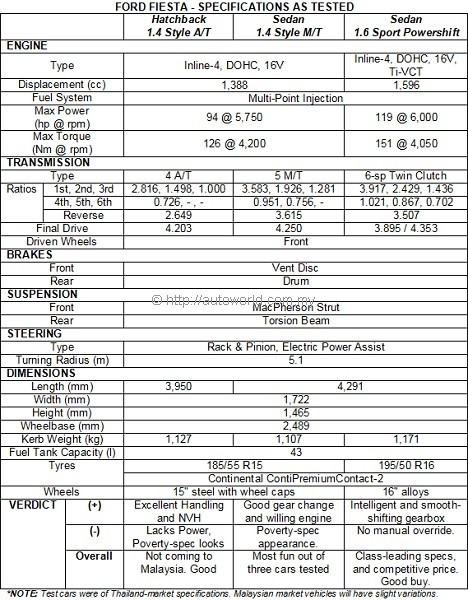 |




